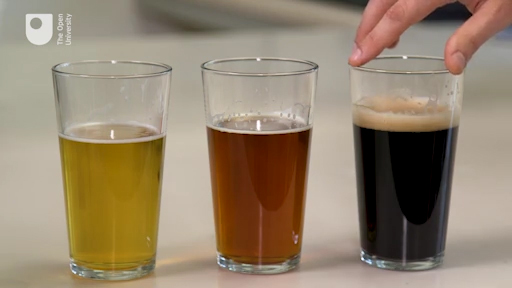3 Types of beer
Beer can be classified using various factors – colour, flavour, strength, ingredients, production method, recipe, history, or origin.
How many different styles of beer can you list?
You may have listed some (or all) of the following as styles of beer that can be readily purchased – pale ale, brown ale, pilsner, lager, bitter, stout, wheat beer (Weissbier), Trappist beer… But in fact, scientifically, most beers can be classified into just two types, ale and lager, and all of the other styles of beer can be grouped into one of these two types.
Although the systematic study of beer styles is a modern phenomenon, the practice of distinguishing between different varieties of beer is ancient, dating to at least 2000 BC.
Most beer styles fall into types roughly according to the time and temperature of the primary fermentation and the variety of yeast used during fermentation. As the terminology of brewing arose before the science of microbiology, ‘yeast’ in this context may refer not only to fungi but to some bacteria, for example Lactobacillus in Berliner Weisse.
Now watch the following video of Danny Allwood describing three of these different styles of beer.

Transcript
What are the two main differences between the fermentation of a lager and an ale?
Lagers are fermented using the yeast Saccharomyces pastorianus whereas ales are fermented using the yeast Saccharomyces cerevisiae.
Lagers are fermented at lower temperatures than ales.
